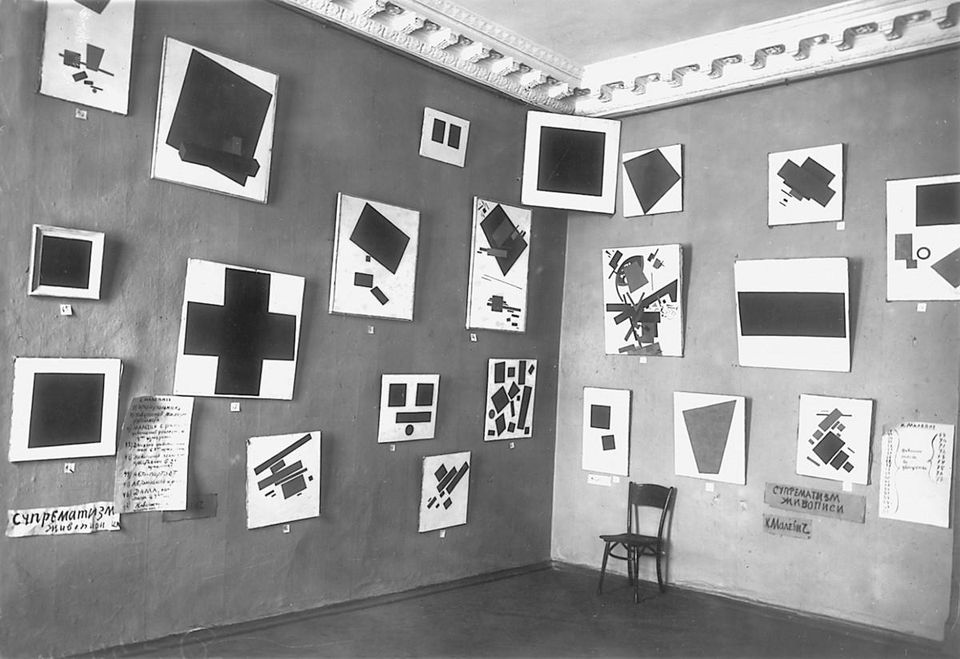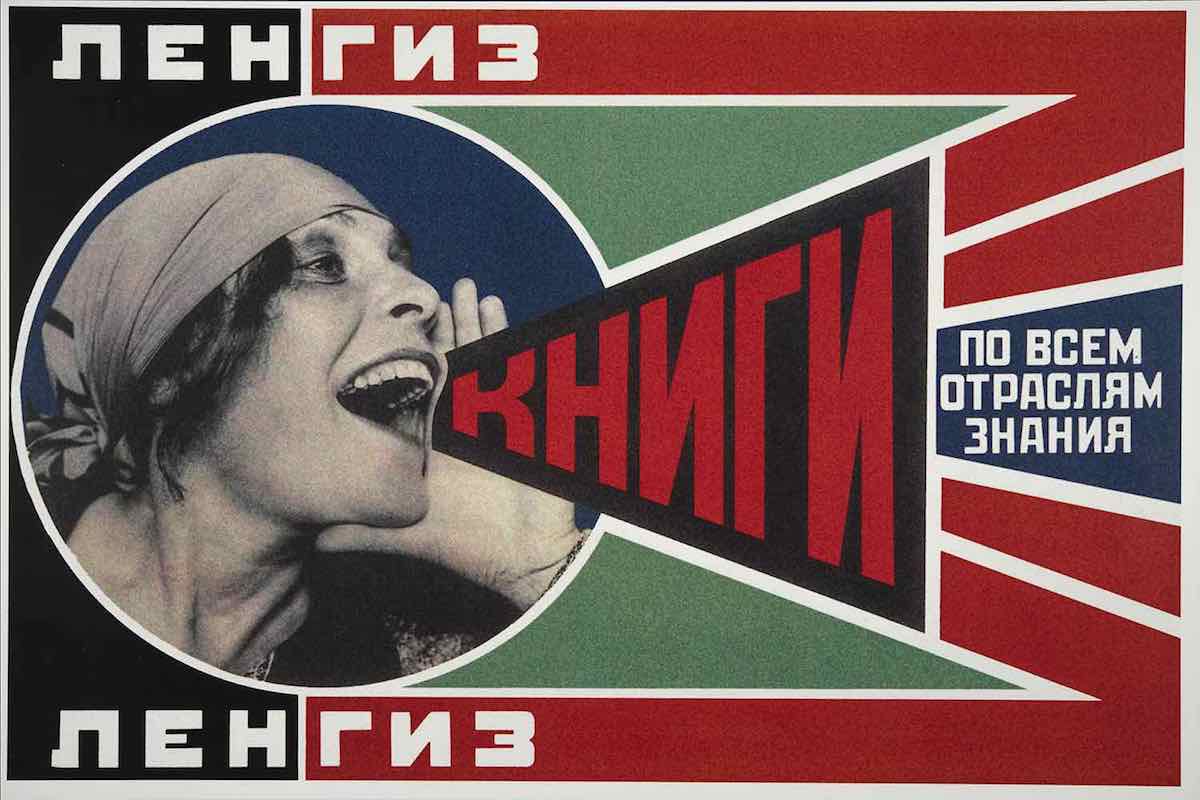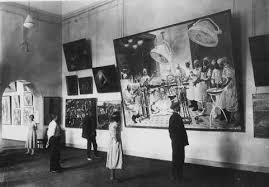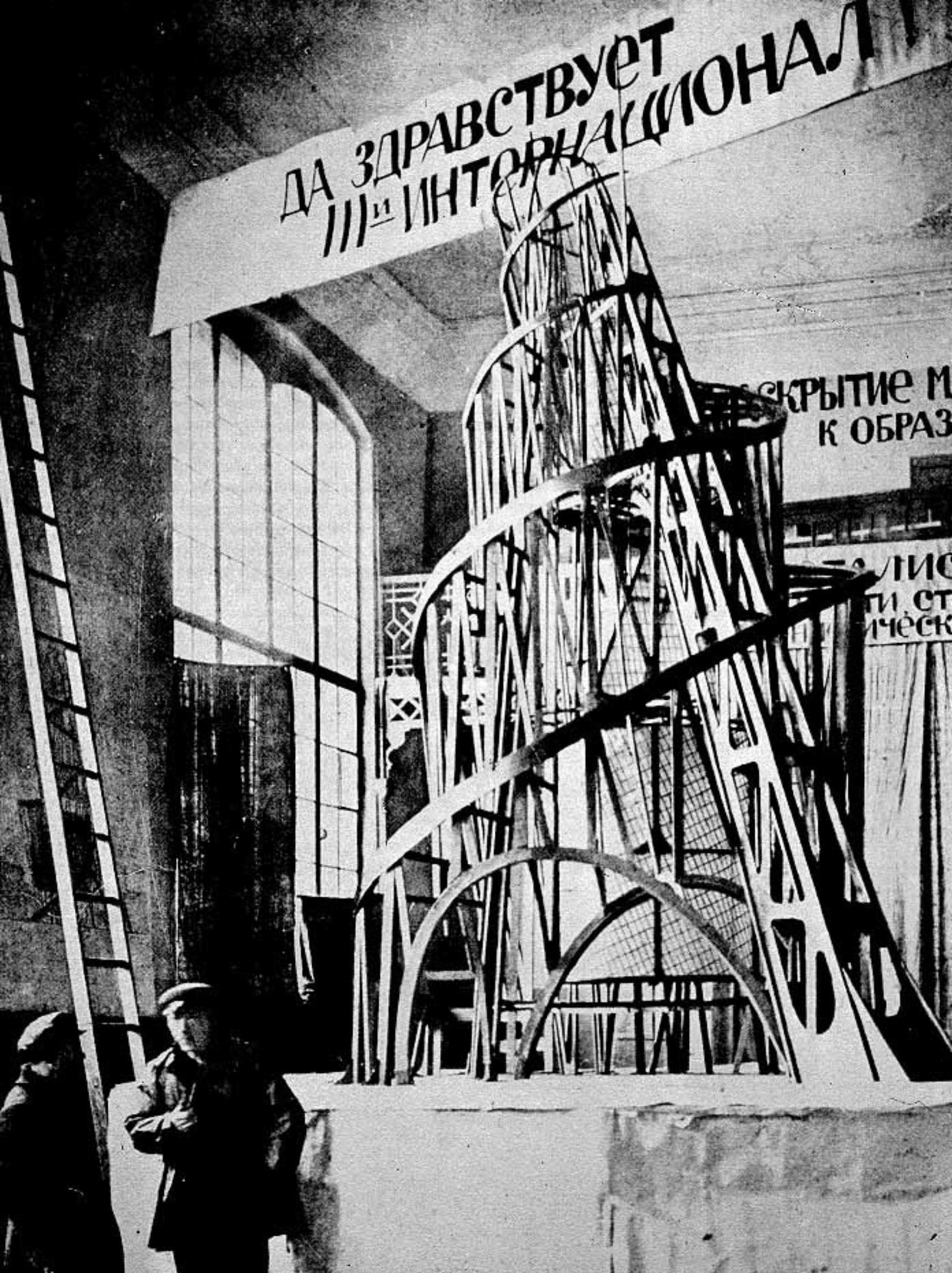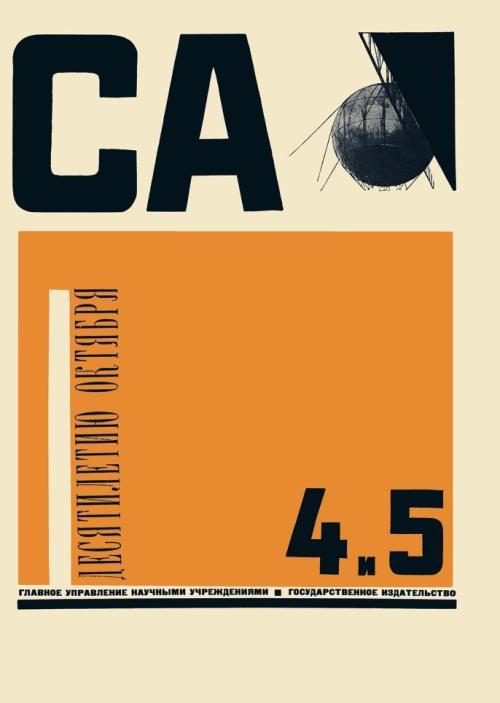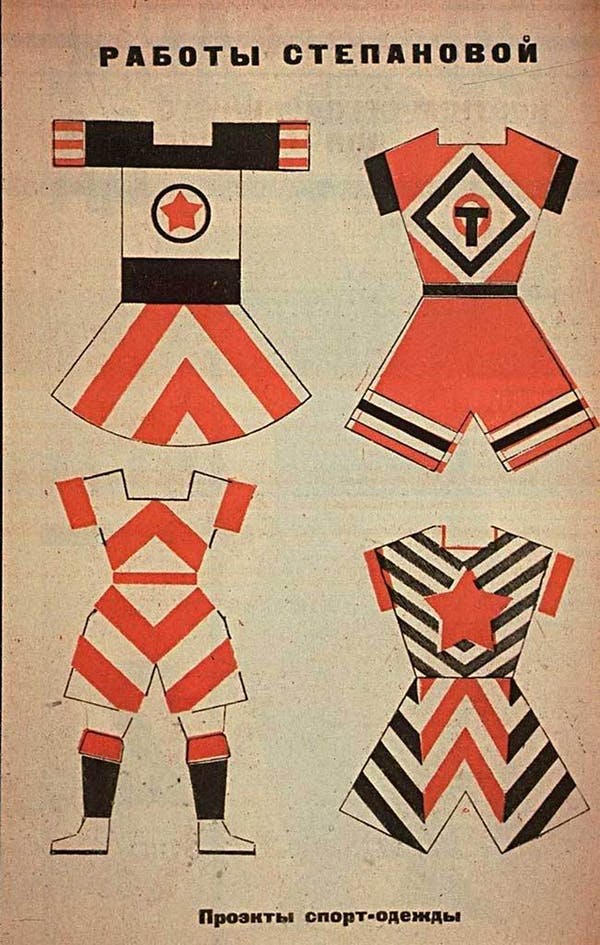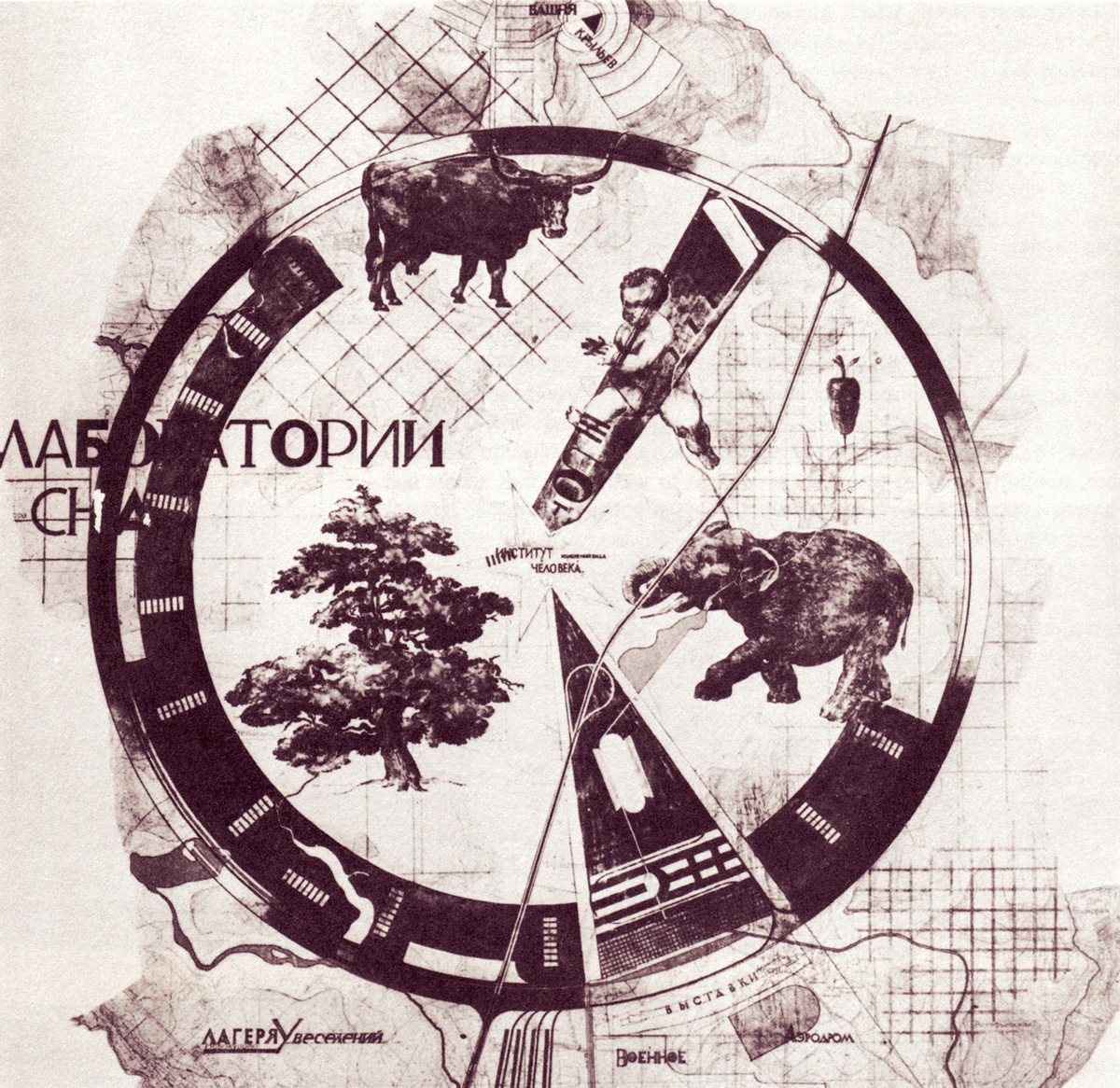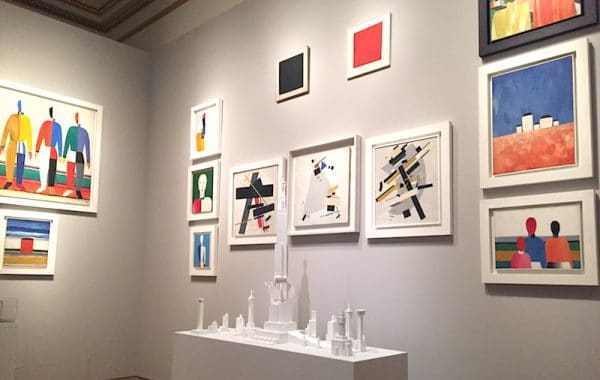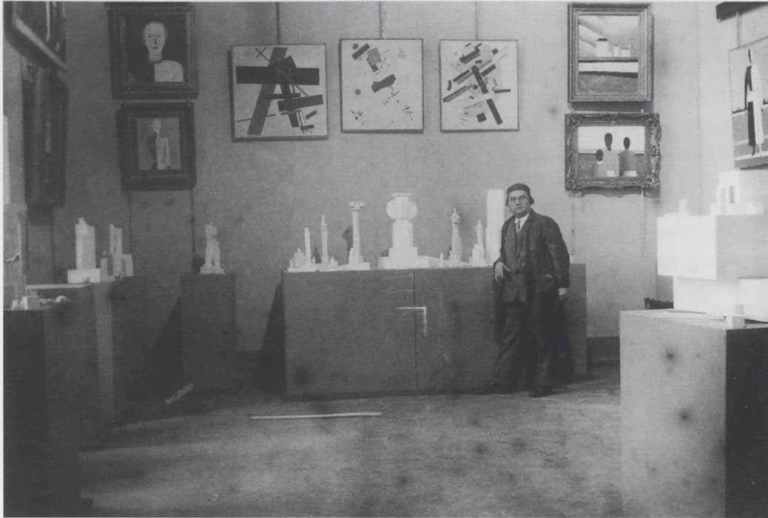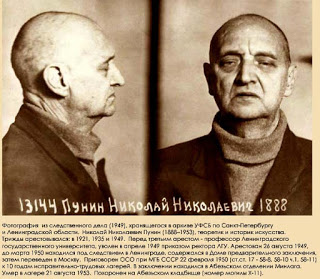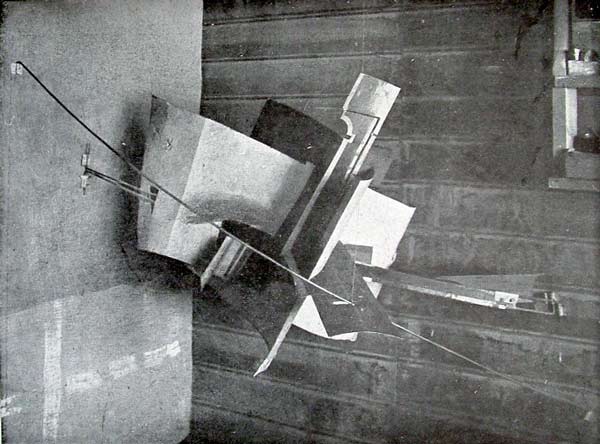‘Take Me I’m Yours …’[i]: Legacies of the Russian Avant-Garde
Gavin Murphy continues his series of essays, this time looking at how the Russian avant-garde in the Revolutionary period has been framed repeatedly as matter of contemporary relevance. It focuses on tensions between competing critical visions, particularly those of Boris Groys and Susan Buck-Morss as they grapple over its legacy after the fall of communism and the collapse of a Cold War dynamic.
What the age calls for is not (as we are so often told) more faith, or stronger leadership, or more scientific organization. Rather it is the opposite – less Messianic ardour, more enlightened scepticism, more toleration of idiosyncrasies, more frequent ad hoc measures to achieve aims in a foreseeable future, more room for the attainment of their personal ends by individuals and by minorities whose tastes and beliefs find (whether rightly or wrongly must not matter) little response among the majority.
– Isaiah Berlin, Political Ideas in the Twentieth Century, 1950.
Vladislav Surkov has gained a certain notoriety as a shadowy figure manipulating media perceptions in Russia. Adam Curtis focused on him in HyperNormalization (2016). He has been described as ‘Putin’s Rasputin’, the ‘grand vizier’ or ‘grey cardinal’ of Russian politics. He is the creator of ‘post-modern dictatorship’ who makes ‘tyranny hip’[ii]. The latter description points to the fact that Surkov is also a novelist and playwright and adapts avant-garde ideas from theatre and insights from French post-structuralist thought in his efforts to bewilder viewers through elaborate and contradictory media spectacles. Surkov, it is argued, has turned Russia into a ‘wonderful postmodern theatre’. Peter Pomerantsev continues this line of thought:
In contemporary Russia, unlike the old USSR or present-day North Korea, the stage is constantly changing: the country is a dictatorship in the morning, a democracy at lunch, an oligarchy by suppertime, while backstage, oil companies are expropriated, journalists killed, billions siphoned away. Surkov is at the centre of the show, sponsoring nationalist skinheads one moment, backing human rights groups the next. It’s a strategy of power based on keeping any opposition there may be constantly confused, a ceaseless shape-shifting that is unstoppable because it is undefinable.[iii]
Pomerantsev seeks to focus on ‘precise, hard calculations’ occurring offstage. He also recognizes that this postmodern authoritarianism is going on tour. Parallels can be found in (and connections with) Trump’s regime with its unapologetic contradictory narratives and ability to work a deep-rooted cynicism towards the political establishment in its favour. Timothy Snyder pulls no punches on this point, claiming Putin escorted Trump from ‘fiction to power’. Synder connects Russia’s tyranny with Trump’s rise, suggesting the figure of Trump as curiously un-American.[iv]
In cultural terms, it might be a surprise to see avant-garde tactics, all too often perceived as the preserve of leftist cultural politics, being used as a means to mask rather than reveal underlying social relations. It might be more surprising to see how easily post-structuralist thought or postmodern discourse can be co-opted in the service of authoritarian rule. Or perhaps these features might not come as a surprise at all. Instead, they might well point to a certain complacency that has accrued around our understanding of relations between the avant-garde and the Russian Revolution, given that these are a foundation upon which many of our assumptions regarding the integrity and radical vibrancy of the avant-garde or neo-avant-garde rest.
I say our but I might be more honest. The spark for this essay comes from a fascination with the Russian avant-garde; one summarised in a lecture which has been presented year on year to the point where I am no longer convinced by the zeal which characterized earlier deliveries. Fascination and complacency do not make for a good mix. The fascination is still there – even to sound the names widens the eyes: Malevich, El Lissitsky, Rodchenko, Vertov, Stepanova, Tarabukin, Mayakovsky [Fig 1 and 2]. There is something compelling in that history – the radical break to abstraction and its accompanying philosophies, the rich debate as to the role art should play in times of revolutionary upheaval, the tension between utility and grander purpose characterizing constructivist art, the embracing of new technologies and fresh ways of seeing (cinema and montage), the splintering and imposition of power that finally led to the dissolution of avant-garde groups and the championing of Socialist Realism.
The momentum of rise and fall makes for good drama, but as any young Trotskyist will tell you, it was not an inevitable descent into tyranny but a story of what might have been. Enthusiastic historical accounts of cultural achievements in revolutionary times hold to the value of the initial dreams and fantasies that fuelled social revolt. The narrative drift of standard western (or Anglo-American) art historical accounts of the Russian avant-garde – think of Stephen Bann, John E. Bowlt, Camilla Gray and Christina Lodder – focus on those extraordinary achievements in extraordinary times as they track the fortunes of the avant-garde. The rise of Stalinism and the imposition of Socialist Realism as official cultural doctrine from the 1930s are seen to signal the death of the revolutionary dreams and ambitions of the avant-garde.
The achievements of the Russian avant-garde have been absorbed into a western modernist canon and critical histories of an international avant-garde. The Russian avant-garde is still upheld as a model for the possibilities of a critical or Neo avant-garde practice today. This is in contrast to an indifference towards, or marginalizing of, the legacy of the avant-garde within Russian culture. Attempts to uphold or reject the value of the Russian avant-garde are embroiled in grander Cold War and post-Communist debates. This essay argues there are three phases of appraisal of the Russian avant-garde by critics and historians performing in western cultural circles: the ‘classic’ modernist stance adopted by the likes of Alfred H. Barr, those more attuned to the critical potential of the avant-garde, and, those more questioning of the legacy of the Russian avant-garde in the light of current circumstance. It is worth examining these three phases, paying particular attention to debate between the latter phase and its predecessors. This is born out by considering tensions between the writers Susan Buck-Morss and Boris Groys as they contest the legacy of the Russian avant-garde.
It is in the first of these the idea ferments that the west saved the Russian avant-garde from the Russians themselves. Alfred H. Barr, director of MoMA from 1929 to 1943, was a frequent visitor to Russia and a keen advocate for Russian avant-garde artists. He acquired many of their works for the MoMA collection to the extent that it remained the significant resource for western scholars up until the 1960s. Many of the works were included in Barr’s exhibition Cubism and Abstract Art in 1936. This was a pioneering exhibition which helped define modernism in the west.
It is Masha Chlenova’s point that Barr absorbed the Russian avant-garde into international modernism at the very point as it was being excluded from art historical accounts in Russia.[v] For Chlenova, the exhibition Fifteen Years of Artists of the Soviet Republic held in Leningrad and Moscow in 1932 and 1933 played a key role in relegating, if not obliterating, the legacies of abstract and Constructivist art [Fig 3]. Avant-garde art was effectively stigmatized and viewed by choice critics as a remnant of bourgeois ideology. The exhibition reinforced the idea that artists were now working peacefully together as a ‘single front’ (although factionalism and competition, according to Chlenova, became more fierce than ever). [vi] The exhibition anticipated the decree of 1934 when Zhdanov announced Socialist Realism to be the official style of Soviet culture.
Barr was aware of how the Russian avant-garde was being marginalized through his close associates in Russia. He was also more than aware of the dangers facing avant-garde practices in 1930s Germany. Cubism and Abstract Art has subsequently been viewed by many against this repressive backdrop. In this way, the figure of Barr becomes pivotal to the Cold War narrative of how America saved the avant-garde from an encroaching totalitarianism in Europe and how, in turn, Barr sought to uphold the values against a suffocating philistinism on his home ground. The point to be made here is that evaluations of Russian avant-garde art are far from being innocent. They operate from an early stage within a framework dominated by notions of freedom and totalitarianism as they are played out between the great triumvirate of the twentieth century – capitalism, communism and fascism.
Those more attuned to the critical potential of an international avant-garde or neoavant-garde in the 1960s and 1970s reacted to the formalist bent ascribed to modernist art practice by the likes of Barr. Many art historical accounts in this period view Russian avant-garde during the Revolutionary period as fuelled by a sense of imaginative possibilities unleashed through a critical art practice.
Stephen Bann, for example, contrasts Russian Constructivism to its European or international counterpart.[vii] [Fig 4&5] Where the international Constructivism prioritized the aesthetic, Russian Constructivism followed a social and political imperative. Getting the balance right between the two was heavily contested. Malevich, for example, warned against a new art arising, ‘not from aesthetic but purely utilitarian aims’.[viii] Bann’s appraisal of Constructivism, in all its variant strains, favours an art wherein a delicate balance was struck between aesthetics and politics, formalism and utility.
Christina Lodder’s account of Russian Constructivism stresses how artists such as Gan, Rodchenko and Stepanova sought to ‘realise the communist expression of material structures’ through their practice.[ix] [Fig 6 and 7] The focus was on social production, drawing upon industrial materials and new technologies to generate a practice seeking social and political transformation. It was not so much a utilitarian art but an attempt to break down boundaries between art and life. They were to be active participants in the generation of a new order, a new everyday life and a new way of being.
John E. Bowlt’s account of the Russian avant-garde, by contrast, focuses on the dynamics between various artistic groupings. It is seen in terms of intergenerational tensions and the demand for the new. Bowlt contrasts the earlier World of Art painters with younger avant-garde practitioners in the following way:
The gift of rational and incisive criticism that the World of Art members displayed was the result partly of their cultural universality and partly of their innate sense of measure; neither quality distinguished the theoretical contributions of the avant-garde, and in fact, it was their very extremism, irrationality, and ebullience that created the explosive and original ideas for which they are remembered.[x]
Bowlt introduces an intriguing dynamic between a measured caution and wild exuberance, between wisdom of age and the folly of youth. It is a dynamic where the insight and experience of age, including Bowlt’s, retains the upper hand. It is within this framework that a youthful verve must be credited for what it achieved. Bowlt continues:
The moderns retained an energy, a primitive strength that the World of Art, in its ‘weary wisdom’, lacked desperately: it was the youthfulness, the wholehearted passion for painting, and the contempt for artistic norms possessed by the new artists outside the World of Art that ensured the dynamic evolution of Russian art after 1900 and turned Moscow into a centre of avant-garde activity until well after 1917.[xi]
Numerous examples may be cited as evidence of youthful avant-garde bombast.[xii] One senses Bowlt’s contextualization affords him a measure of critical distance whilst at once admiring the achievements of the avant-garde. So, just as many relished the spiritual and cosmic fantasies of nineteenth century Russian utopian thought, Bowlt finds in Suprematism an intuitive, theosophical and speculative dimension that is lacking in western avant-garde traditions. [Fig 8] This ‘painting of the soul’, Bowlt continues, marked a ‘genuine and original contribution to the international cubofuturist and abstract movements’.[xiii]
Art historians in the west generally agree upon the repressive effect of state legislation upon the avant-garde in the early 1930s. However, many accounts have in parentheses elements which soften the hard-edged contrast between avant-garde practices and Socialist Realism. A sense of an avant-garde running its natural course can be detected in some accounts. Bann recognized how the Constructivist belief in the essential unity of all the branches of art was virtually abandoned in the 1930s, even by Constructivist colleagues in the west. Chlenova notes how the dissolution of all artistic groupings in the April Resolution gained the broad support of artists and critics keen to see an end to factionalism. Bowlt concurs with this, arguing that despite the severity of the Stalinist decrees and the uniformity of the artistic results, they did provide a sense of direction and a definite style to artists ‘conscious of the aesthetic impasse’ and perplexed by many conflicting ideas.[xiv] Bowlt reveals a surprising degree of ambivalence towards the imposition of cultural order under Stalin, as if an unruly avant-garde is finally called to heel. Bowlt, though, is somewhat of an exception in this instance. By in large, art critics and historians focusing on the Russian avant-garde from the 1970s view it as a touchstone for a contemporary critical practice. Susan Buck-Morss, as we will see, is an heir to this tradition.
Boris Groys perhaps best represents more recent writing on the legacy of the Russian avant-garde which questions this consistency which has accrued around art historical accounts in the west. He questions those who all too often frame defenders of Socialist Realism as those seeking to censor and persecute ‘genuine’ art. [xv] He questions the idea of an autonomous avant-garde having a monopoly on quality and upholding the virtues of individual freedom consistent with western standards. This, for Groys, is naïve given so many cherished examples within the western canon are works commissioned by patrons keen to embellish and glorify their power and prestige. The Russian avant-garde was little different. They never desired the role of outsider or marginalized victim. In fact, many would take up key positions in the new Soviet administration as a means to advance their ambitions. Rodchenko, for example, used his position as Head of the Museum Bureau of the Commasariat of Enlightenment to acquire a significant collection of avant-garde works for the state. The Russian avant-garde saw themselves shaping the future on their own terms with everyone else following their ‘unitary plan’.[xvi] So while Constructivists cooperated with the Bolshevik authority, they were, according to Groys, ‘sure of their own intellectual superiority’.[xvii]
The avant-garde desire for power, Groys continues, contained within it seeds for its own destruction. As with Chlenova and Bowlt, Groys recognizes a destructive factionalism which contributed to its downfall. In the 1920s, the Lef group turned upon formalists, declaring them reactionary and counter revolutionary. Rodchenko would describe Tatlin, his former colleague, as a ‘typical Russian holy fool’ by adhering to the ‘mystique of the material’.[xviii] [Fig 9 &10] The AkhRR group would also label their opponents counter revolutionary as various grouping sought to secure a monopoly. The internecine strife in cultural circles would soon be echoed in the political repression of the era. Characters closest to, and competing against, those in power suffered quicker than most. Hence the irony of Groys’ claim that to be ‘realist’ under Stalin was to avoid being shot for insisting on a different vision of the future.[xix]
Groys’ point is that the avant-garde’s desire for total control would lead to conflict with Bolshevik authority keen to garner as broad a support as possible and to implement its vision. It is in this light that Groys finds the avant-garde’s ‘will to power’ echoed in the figure of Stalin himself:
Under Stalin the dream of the avant-garde was in fact fulfilled and the life of society was organized in monolithic artistic forms, though of course not those that the avant-garde itself had favoured.[xx]
Groys insists on continuities between Stalinism and avant-garde practice:
Stalinist culture brought out into the open the myth of the demiurge, the transformer of society and the universe, which, although it was presumed by the avant-garde, was not explicitly expressed in avant-garde artistic practice, and it set this myth in the centre of its entire social and artistic life.[xxi]
Groys focuses upon what he calls an ‘aesthetico-political will to power’ which he finds at the heart of artistic projects, arguing that everyone in the Soviet Union ‘sensed intuitively that Stalinism was merely the apogee of triumphant utopianism’.[xxii]
The contrast between Groys and standard western art historical narratives is stark. The disillusion in Groys’ account of the Russian avant-garde is precisely that which is absent in the latter. Certainly, it has been recognized that critics such as Bowlt admire achievements of the avant-garde in the revolutionary period in terms youthful zeal, if not folly. This has parallels with the nihilism and anarchic edge Groys ascribes to many of its practitioners. But, by and large, western accounts of the achievements of the Russian avant-garde frame its practices as exemplary to the extent that hopes for the future might be modelled through them. True, American modernist accounts (Barr, Greenberg, etc.) limit avant-garde ambitions to keeping open a path along which future possibilities might arise. The legacy of the Russian avant-garde has, it is argued, been shaped to a significant degree on these grounds. Yet American modernist narratives have been challenged by a generation of art historians exposing the hapless role of avant-garde practice in America as a weapon of Cold War cultural politics.[xxiii] What, then, might be asked of contemporary accounts written in the knowledge of Groys’ critique and in the knowledge of the shortfalls of American modernist accounts. Could the same pitfalls of complacent critique appear once again, perhaps in amended form but with a consistent blind spot stretching beyond Cold War narratives?
Susan Buck-Morss’ writing is a good case in point. Her Dreamworld and Catastrophe: The Passing of Mass Utopia in East and West was published in 2000.[xxiv] For Buck-Morss, the utopian vision of the twentieth century has collapsed. This is where industrial modernization in its capitalist and communist forms sought to bring about the ‘good society by providing material happiness for the masses’, leaving a caustic brew of ‘personal utopianism and political cynicism’ in its wake.[xxv]
When focusing on the Russian avant-garde in the revolutionary period, Buck-Morss recognizes how the cultural avant-garde was subsumed by the political vanguard so that an ‘ungoverned cultural revolution as the path to a new society’ was not to be.[xxvi] Like Groys, Buck-Morss recognizes the avant-garde posed a threat to the political vanguard by working on the same discursive terrain. It was a battle they did not win. Buck-Morss puts it like this:
… artistic practice could no longer attempt to disrupt the continuum of history as defined and led by the party … Hence the lost opportunity: the temporal interruption of avant-garde practice might have continued to function as a criticism of history’s progression after the Revolution.[xxvii]
In becoming a servant to the political vanguard, art merely glorified successes and overlooked the failure of the party. It foregoes an imaginative dynamism and self-reflexiveness which characterizes the avant-garde’s critical remit. Buck-Morss ambitions for the avant-garde is to have it all – forging the future and controlling/critiquing the progress of a political vanguard.
Buck-Morss recognizes how she falls in line with an ‘international narrative of the artistic avant-garde’ developed in the west in the 1960s, placing more emphasis on the question of praxis than earlier American modernist conceptions. However, it is the nature of this praxis which can be called into question. For at its heart is a refusal to countenance the key point Groys is making. When asked if the artistic avant-garde and political vanguard shared the idea of a ‘prophetic future tense’ or a ‘messianic ethics/aesthetics’, Buck-Morss insisted on marking out significant divergences between the two.[xxviii] Few of the early avant-garde artists were Party members, she argues, and indeed, many had anarchist leanings. Buck-Morss maintains that, ‘cultural experimentation and political obedience are antithetical attitudes’.[xxix] It is hard to disagree, but this is not what is being asked. She is asked to address the myth of the socialist demiurge which is seen to be shared between the avant-garde and political vanguard. Moreover, in the same interview, Buck-Morss recoils from ‘destructive, nihilistic definitions of avant-garde practices’. By shielding the avant-garde from its nihilistic bent as well as from earlier American modernist definitions, she clearly places restrictions on what is deemed worth of inclusion. Buck-Morss, like so many others, generates an insularity which fails to puncture its own rhetorical framework.
It is a framework where the art object is valued for its power to ‘arrest the flow of history’ and for its ability to offer alternative visions, whether through negation or utopian impulse.[xxx] The aesthetic experience ‘teaches us something new’, dragging the ‘citizen audience’ from ‘moral complacency and political resignation’ to make ‘their own conclusions’.[xxxi] Shifting into another key, Buck-Morss attests to the tragedy of the shattered dreams of modernity, picking through its ruins so as to hold up utopian hopes which were crushed by abuses of political power.[xxxii] Melancholia and cynicism simply will not do. The utopian impulse must sparkle once again.
Within this, Buck-Morss can summon fantastic speculative visions of technological advance, citing among others, experiments in solar heating, green cites and flying bicycles. [Fig 11&12] Russian avant-garde experiments are vacuum packed and sealed from a trickier questions so as to offer hope to a new generation in another century: that their ideas can this time inspire a new reality into being on their own terms. Fascinating as this might be, surely it is equally fascinating that avant-garde visions failed to take hold; that there was a steady ebbing of power from avant-garde circles at a time leading to repression of the worst sort. That herein was a journey for each and all – to forge, hold to or critique the revolutionary path by working through the institutions of state under challenging conditions. Buck-Morss assumes the integrity of the artist – for this has been unquestioned – and yet one senses in the fraught journeys from the 1920s to the 1930s doggedness, precariousness, compromise, a hedging of bets, opportunism, gambits, pulling rank, tapping contacts, cliques, agonizing choices, whisperings, gossip, backbiting, grassing up, vanity, egos and belligerence. Of course there was integrity, but the challenge was holding to it in times of crisis.
Georgy Rublev’s Portrait of Joseph Stalin (c.1930) [Fig 13] is interesting in this regard. It was a standout work in the Royal Academy’s Revolution: Russian Art 1917-1930, making it to the cover of Artforum for its October 2017 issue when it reviewed this and other shows on the Russian Revolution. The painting’s appeal lies in rich colouration, delicate swishes of loose brushwork and a working back to canvas. There are echoes of a folk charm and primitive simplicity which can be found in the likes of Chagall, Larionov and Matisse. There is a tension between the red dog with gruff yellow eyes curling round the feet of Stalin. Stalin is relaxed, yet coy, in a wicker chair reading a copy of Pravda. It is an intriguing projection of power. Its grip, of course, lies in how out of kilter a work like this would have been when it came to the question of how best to present Stalin as the figure of authority in the 1930s. It is said the work remained hidden in Rublev’s studio and was never displayed until the 1970s. It was as if there was a serious disjoint between artistic pride and wider acceptability. Rublev had been accused of formalism in the late 1930s (in other words, counter to an officially sanctioned art) and his later work focused on still life and landscape. Against this relative safety lies this portrait which would appear to be born from high stakes power play from an artist of ambition, caught between conviction, safety and doubt.
T.J. Clark’s review of the Royal Academy show in 2017 dwelt upon a similar predicament. Clark focuses on the Malevich room, a reconstruction of a room exhibiting Malevich’s work in the 1932 exhibition Fifteen Years of Artists of the Soviet Republic held in Leningrad [Figs 14 and 15]. This exhibition, it will be remembered, was deemed instrumental in relegating the role of the avant-garde in the development of Soviet art at the point when Socialist Realism was coming into being. It is presumed Nikolai Punin, one of the curators of the 1932 exhibition and keen advocate of avant-garde practice, fought hard to include Malevich’s work, going against the grain of encroaching dogma. A slide image of Punin’s official mugshot from the Gulag taken in 1949 was included in the final Memorial room of the RA exhibition [Fig 16]. Punin is withdrawn and haunted; his image flicked up as one among many others who died in the purges. The tension between the Malevich and the Memorial rooms prompted Clark to consider Punin’s enthusiasm for Malevich as but ‘a small item on the torturer’s chargesheet’.[xxxiii] Yet, Clark continues, ‘the fact that Punin had his way in 1932 – that he dared to try – should make us step back from our usual understanding of art in the moment before the Terror’.[xxxiv]
Figuring the Malevich of this time is equally fraught. Malevich had been arrested and interrogated in 1930. Friends had burned his papers, presumably to avoid incrimination. Yet still Malevich is seen by Clark to be not without ambition. Malevich’s Black Square (1915), ‘an abyss, a reality – that had prophesised 1917’, is seen to be tied intimately to an engagement with Bolshevism.[xxxv] For Malevich and his followers, Bolshevism, ‘if it was to become fully itself, had to agree to disappear into Suprematism’s gravitational collapse’.[xxxvi] Here again, we have echoes of Groys’ critique of a will-to-power. Malevich assumes a place at the forefront of progress where the dreams and realities of Bolshevism are to be beholden to the black square. But to hold to this gambit in 1932, given the writing on the wall, the struggle with the imposing order, the known horrors of collectivization? ‘Soon the Brodskys will declare we are all kulaks’, Malevich wrote in 1930; Brodsky being a model painter for Socialist Realism.[xxxvii] [Fig 17] Here we sense what the stakes are. Necks are on the line and still Malevich could claim the following:
Before me stands a huge task … and I live in hope that Soviet Power in the person of Many Comrades will give me the chance to pursue it.[xxxviii]
This, for Clark, was not simply self-delusion but a measure of the ‘absurd and horrifying improbability of Bolshevik culture’.[xxxix]
Contrast this with the demands of Tatlin in 1935 when approached by Jay Leyda, Alfred H Barr’s liaison in Russia when purchasing Russian avant-garde works for the MoMA collection. Leyda negotiations with Tatlin were somewhat strained, with Leyda noting Tatlin’s ‘profound, even holy respect for every piece of paper or tin he worked on and demanded the same reverence from all guests’.[xl] Tatlin asked for the latest Harley-Davidson or an Indian Scout motorcycle as payment for his Corner Counter-Relief from the 0.10 exhibition of 1915 [Fig 18]. This was to the horror of Barr who expected to give some books in exchange for the work. While it was also to the amusement of a contemporary MoMA audience listening to Chlenova’s talk (the consumerist dreams of the Russian avant-garde?), Chlenova makes the point that Tatlin’s ‘exaggerated reverence’ for his work might have been a ‘compensatory mechanism’ for his isolation having been condemned of formalism by authorities several years earlier.[xli] Whatever the motivations, one can sense uneasiness around an instability of artistic and monetary value in these transactions; an unease exaggerated all the more if we consider tensions arising from an interest in Tatlin’s work from New York while being somewhat marginalized at home on the eve of the Great Terror.
Rublev, Punin, Malevich, Brodsky, Tatlin: Just how to understand the ambitions, motivations and manoeuvres of these characters in the 1930s leave art historians like Clark and Chlenova in a speculative domain. There is a fascination here for the unknown, one quite different from the proselytising zeal of those seeking a new dawn through visions of an avant-garde. One senses the most fruitful research of a new generation of art historians on this subject lie in raking through the aftermath of revolution.
Part of that aftermath also involves its ongoing recontextualization. Natalia Murray, a co-curator of the RA exhibition, speaking at the opening night claimed, ‘We are not celebrating revolution here … I don’t think there is much to celebrate’. What is to be celebrated, Murray continues, is that ‘the values of ‘Eternal Russia’ survived’. This prompted one reviewer, Paul Mitchell, to make the point this would be music to the ears of the sponsors of the exhibition, ‘billionaires who made their fortunes largely from the carve-up of the state assets of the former Soviet Union’.[xlii] Matthew S. Witkovsky, writing in Artforum, also sensed a ‘vague populist notion’ of a ‘persistent Russian people whose ethnic ‘soul’ speaks through the works of individual makers’.[xliii] Witkovsky put it like this:
They [the audience] could conclude that rather than participate in a state-directed common enterprise, it is best to pursue ethnic and individual self-determination … such a conclusion nicely extends the convergence of neoliberal and nativist politics sweeping the world in recent years … a situation in which class conflicts are omnipresent but mentions of class are nearly absent – and collective planning, indeed, the very word regulation, has become anathema.[xliv]
It is clear the legacy of the avant-garde in the Russian Revolution is embroiled in present concerns. An indifference towards its legacy in Russia is in marked contrast to its centrality to western accounts of the avant-garde. This indifference is repeated in official commemorations of the Russian Revolution, with Putin, according to a TLS editorial, having ‘little interest in celebrating dissidence or disturbance or the power of its people’.[xlv]
Hence, the attention at the beginning of this essay given to political technologists shaping Putin’s managed democracy. A post Cold War landscape is coming into being, marked by a new authoritarianism. If the combination of free-market economics, cool culture and democratic politics helped defeat the old USSR, Pomerantsev argues, the likes of Surkov have turned this on its head, slipping inside ‘all ideologies and movements, exploiting and rendering them absurd’.[xlvi] There are clear echoes here (as well as nefarious connections with) the rise of populism in the west, typified by Brexiteers and Trump in which various contradictory narratives can be played out at once. ‘To believe in something and stand by it in this world is derided’, Pomerantsev claims, ’the ability to be a shape-shifter celebrated’.[xlvii] There is, however, an underlying stability to Putin’s regime, found in an aggressive economic expansion and steady co-optation. Pomerantsev describes the Kremlin as a kind of corporate raider expanding its reach by corrupt means. They are, for Pomerantsev, ‘the twenty-first century’s geopolitical avant-garde’.[xlviii]
How does a proselytizing zeal which uses the Russian avant-garde as a springboard for a new level of engagement perform in this terrain? Of course, Buck-Morss is not alone, being one voice among many on a cultural circuit concerned with invigorating the left in challenging times. I am thinking here of Former West, an initiative set up by BAK (basis voor actuele kunst) in Utrecht between 2008 and 2016. This was an extensive research project including conferences, exhibitions, a digital archive and publication. It involved a wide cross section of thinkers on the left in the field of contemporary culture including Tariq Ali, Okwui Enwezor, Maria Hlavajova, Simon Sheikh, Hito Steyerl, and Eyal Weizman. More significantly for this essay, it included both Groys and Buck-Morss. The basic idea is that unlike the ‘former east’ which identifies the various changes occurring after the fall of communism, the west has not been ‘formered’. The task is thus to ‘former’ the west:
to undo – to former – westcentrism in the resilient economic, technological, political and epistemological infrastructure of power and domination that allows for various forms of totalitarianism, contemporary fascisms included, to preside over our lives.[xlix]
Such a task focused on the postcolonial condition and post communism in the effort to tackle a raw, invigorated capitalism
It is within this context, Buck-Morss claims the Eurocentric, metropolitan intellectual elites must give ground to others across the globe within the ‘flattened geographies of cyberspace’.[l] Buck-Morss argues, a ‘New Global Left’ will grow from a ‘universal historical condition’, one which calls for an ‘infinite variety and democratic interaction’ as well as a ‘new, collective subjectivity’.[li] As a response to our contemporary condition, it is rather short on how exactly we are to reach this new form of consciousness. As a utopian project, I sense it has run out of gas.
Groys, by contrast, recognizes a networked society with almost ‘unlimited power of algorithmically -organized surveillance and control by others’.[lii] Contemporary globalization is marked by competition and increasing conservativism. Those of the ‘former east’ are encouraged to view the communist past as an interruption of their nation’s development and are to push to make up for lost time within the global marketplace. Groys also notes that western intellectuals on the left tend to view the Soviet Union as an aberration and a ‘delay in the development of the communist ideal’.[liii] It is as if the legacy is being attacked from both left and right, as indeed is the very role of the state. ‘After the liquidation of the socialist states in Eastern Europe’, Groys argues, ‘the Western social-democratic states went the same way’.[liv] It is a good point to make. Groys is little convinced by a Deleuzian politics which reacts to the withering state by appealing to a ‘the individual and mass creativity, intensified vitality, self-organization, and risk-taking’.[lv] One might expect a similar distain for accelerationist politics wishing to bring out the best by bringing on the worst. Buck-Morss’ vague faith in a new dawn for humankind might also be included in this mix.
Two voices, Buck-Morss and Groys, circling forever like Scorpio and Orion among a plurality of others within Former West. They characterize a discursive economy centring on the efficacy of the avant-garde then as now, as each and all on the left seek a possible solution to the current impasse. The legacy of the Russian avant-garde has given some hope within this cultural framework. Its achievements still exist for many as a touchstone for the possibility of a critical or neo-avantgarde culture today. Others question if such a thing is possible at all. Careful attention to the fraught and compromising conditions in which artists in Russia of the 1920s and 1930s were to operate resonates with the dilemmas and impasses of the present. On these grounds, Groys is by far the more convincing (as indeed is Clark’s wrestle with Malevich).
Groys recognizes the passing of an old Cold War dynamic typified by tensions between Soviet rule and social democratic forms of liberal statehood. One could extend this point and recognize the differing forms of state patronage as also having withered away. Soviet state patronage had clearly defined roles for the artist which contrasted sharply with an (supposed) autonomy granted to artists in the west. It might well be argued this Cold War bind put pressure on the west to uphold liberal values of artistic autonomy and freedom. One wonders if an increasing tendency to treat these liberties as a luxury a squeezed economy can no longer afford as growing from an absence of this pressure. Artists, curators and administrators are ever more reliant upon neoliberal funding streams as a matter of keeping their practice alive. Bureaucratic demands for efficacy, impact, audience growth and economic sustainability, the role of the arts in marketing the city as a tourist enterprise and economy booster characterize a new terrain the artist and curator is to play. And irony of ironies, the rhetoric of the avant-garde can all too often satisfy those demands. Application forms are to be, by necessity, fresh, dynamic, youthful, aspirational, optimistic, edgy, critical and real. They are to be future-orientated with a proselytizing zeal for new audiences and promising new forms of engagement. Have we not more to learn from the fraught conditions and dilemmas facing artists in what was to be a time of hope? A sharper look at history helps clarify the need to reconsider the role of the artist, less a figure of integrity than as the new precariat, long fallen from grace. They are compromised, struggling and aspirational (but for what?). One senses the matter of artistic quality will be woven through these concerns.
‘True contemporary art’, Groys writes, ‘is a closed territory that accepts everybody and everything’. It inhabits a world which, ‘is becoming increasingly conservative and restrictive’.[lvi] One can sense the value of the boundary between individual life worlds and public authority: that old notion of a freedom to pursue our own goals in our own way. One can also sense those old liberal values in the worth of freedom, organizing its defence and securing a decent standard of welfare through an invigorated state. One can hear echoes of Isaiah Berlin’s critique of authoritarian regimes: their fear of the critical powers of their citizens, preferring a training of individuals ‘incapable of being troubled by questions which, when raised and discussed, endanger the stability of the system’.[lvii] We are reminded of the idea that a new authoritarianism can only be removed by being analysed and understood. And one can sense the deep cracks in this outlook as contemporary circumstance reveal a new confidence by those questionable regimes. Boris Groys and Isaiah Berlin. What a curious bond for the age we are in. What curious material they examined. What questions there are still to be resolved.
